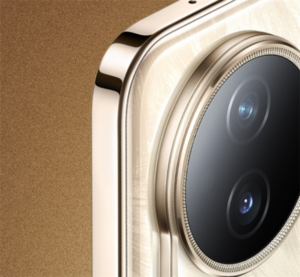Vivo X200 series to be released on October 14: Pro version to feature 200Mp periscope sensor

vivo has officially announced that the X200 series new product launch conference will be held at 19:00 on October 14 at the Beijing Water Cube. The new phone is expected to be equipped with MediaTek Dimensity 9400 processor.

Blogger Digital Chat Station revealed that the vivo X200 Pro will exclusively have a 200Mp f/2.67 85mm large-bottom periscope, V3+ imaging chip, a focal length covering 15mm-85mm, and 200Mp printed on the lens.
The vivo X200 Pro mini shares the Sony LYT818 f/1.57 23mm 1/1.28″ ultra-large bottom main camera and f/2.57″ 70mm mid-bottom periscope, and the entire series supports telephoto macro.
Among them, the Sony LYT818 sensor is based on the vivo imaging algorithm and adopts a 22nm process technology. It has better power consumption, stronger computing power, and a smaller size. It can not only save shooting power consumption, but also make the bulge of the mobile phone lens smaller.

In addition, yesterday, Jia Jingdong, vice president of vivo brand, disclosed the configuration information of vivo X200 series mobile phones.
In terms of imaging, the vivo X200 series has upgraded the “telephoto portrait” this time , adding a new 135mm focal length to the “five major humanistic focal lengths” of the X100 series, namely 24mm, 35mm, 50mm, 85mm, and 100mm.
The vivo X200 series also pioneered the “Landscape Mode” . Whether it is the lonely smoke in the desert, the natural ravines and the sinkholes, or the cyber city and the cliff town, it can accurately capture the mystery of the sky and the charm of the landscape, allowing you to take pictures of the scenery during the journey with just one click.
In terms of video, the vivo X100 Ultra has demonstrated cinematic video shooting capabilities, and this time, the X200 series brings 4K 120fps movie slow-motion, full-focus 10-bit log, and 4K backlit movie portrait video .
It is understood that vivo has also added a “large model image quality enhancement algorithm” to its self-developed algorithm matrix.
In addition to the optical lens, AI is used to perform “super-guessing and simulation of details” to make the final image details lifelike and undistorted, achieving the effect of “superimposing” what the eye sees and “seeing” beyond what the eye sees.


Kazam is Focused on creating and reporting timely content in technology with a special focus on mobile phone technology. Kazam reports, analyzes, and reviews recent trends, news and rumors in mobile phone technology and provides the best possible insights to enhance your experience and knowledge.







